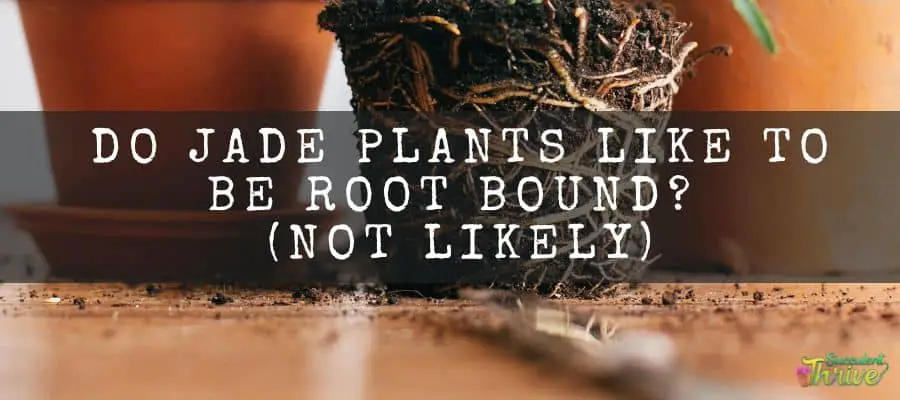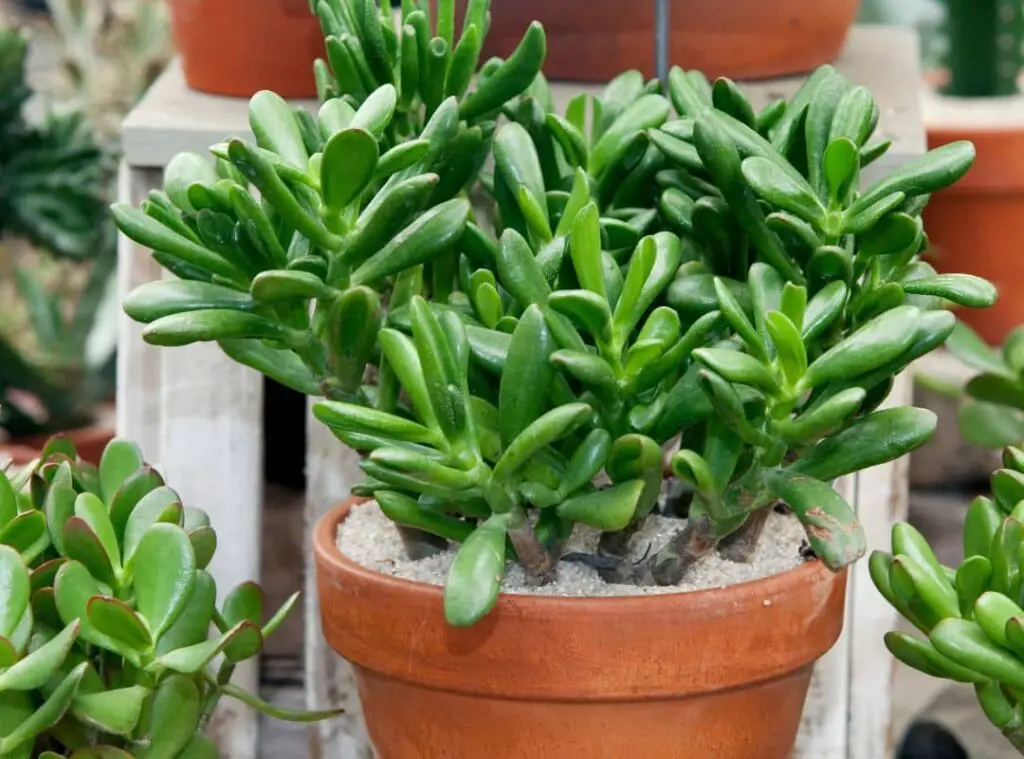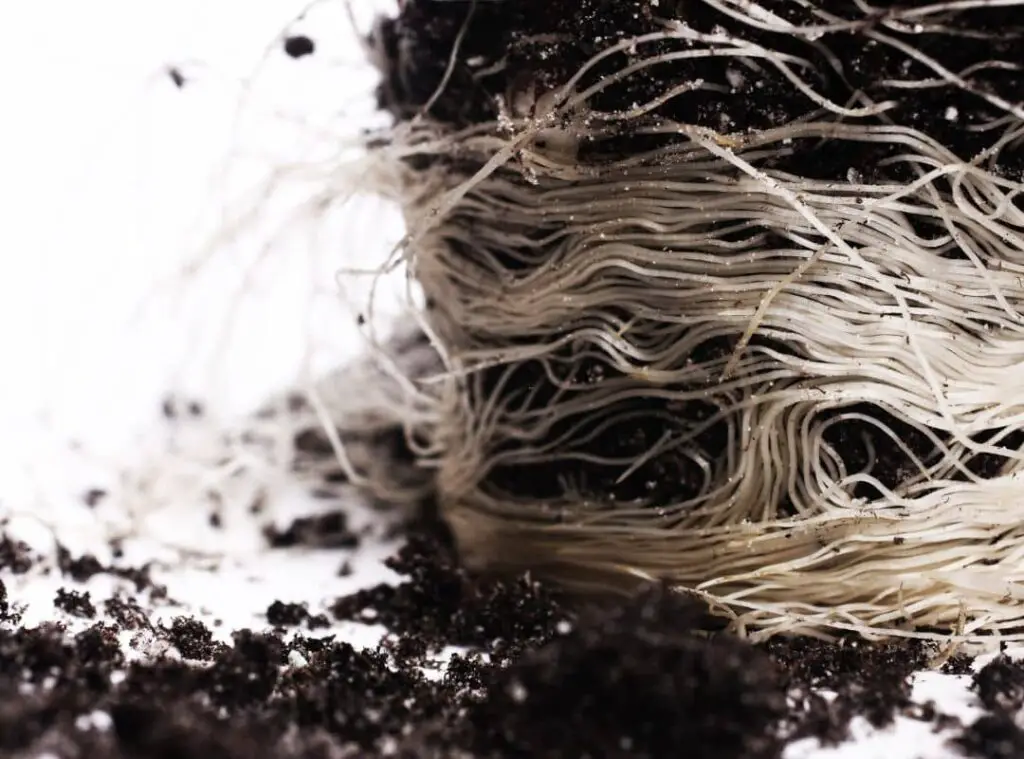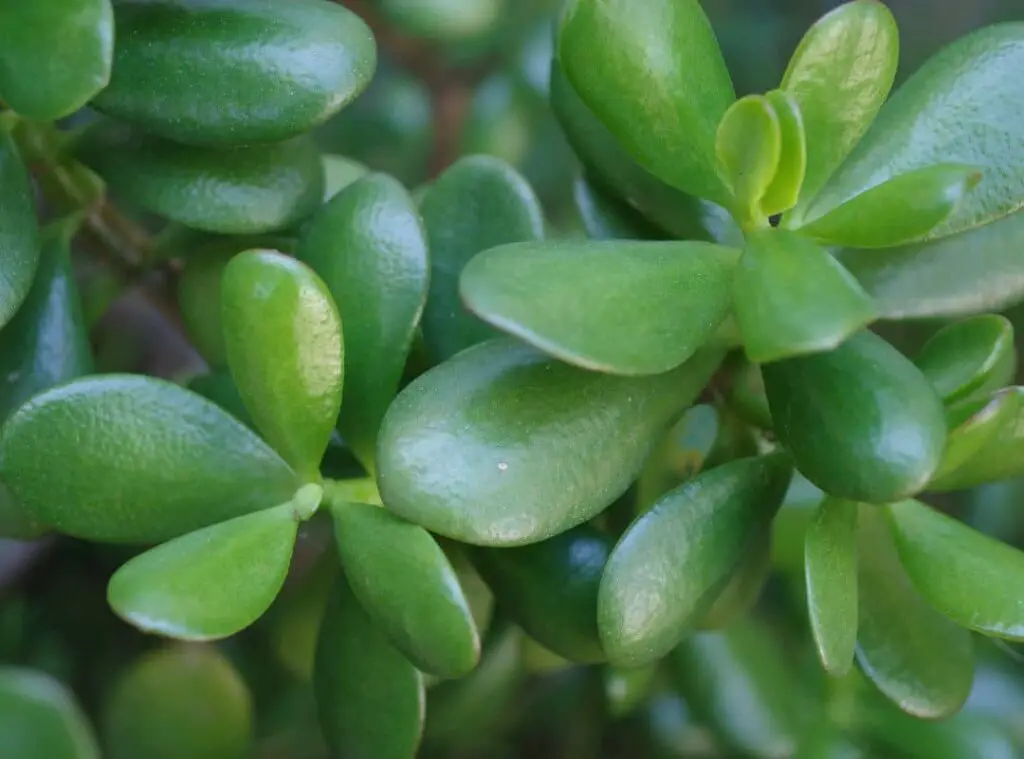What do you know about root bound? Consider that roots will not have enough space to grow, then they start to tangle and make a root ball. Consequently, all the soil in the pot would displace and eventually it would make it difficult for the plants to absorb the nutrients and obtain the required nourishment. But I heard some plants like root bound. Is that include the jade plant? Do jade plants like to be root bound? I had to find the answer. Because my jade plant is root bound.
It turned out, that jade plants do not like to be root bound. I kept them in a small pot for a long time, and they could not grow freely as they wish. In my experience, it badly affected the plant’s development and stop the plants from achieving their maturity.

Once the plants grow older, it is quite normal for the roots to expand as well. So, it is important that they have adequate space to expand and grow freely. Sadly, once my jade plants become root bound, it made the plants turn brown.
All in all, if your plants have stopped growing, it is most probably due to root bound. Jade plants don’t like to be root bound, as it would result in droopy leaves. In addition to that, it would impact the oxygen and water supply of the plants. Not only that but also, it would lead to so many other adverse repercussions. So, if your plants come across these signs, you need to immediately act fast and rectify the issue. So, in this article, I am going to describe the steps I followed to recover my jade plant and some steps to prevent this issue.
How do I know if my jade plant is rootbound?
It is somewhat tricky to identify whether your Jade plant is root bound or not. So, to identify it there are several things to consider. The first method is, you need to look out for the signs of root bound. If you spot the plants that have turned yellow and brown, it literally means the plants have become root bound. In addition to that, your jade plants either stop the growth or slow their growth if they suffer from root bound.
In addition to that, you could witness the plant’s roots coming out of the draining holes in the pots. They will further displace the soil in the pots and make the plants struggle to absorb the nutrients. Apart from that, Jade plant leaves would droop and curl. Moreover, the plants may suffer from dehydration when they become root bound. Finally, Jade plant pots may tend to crack once they suffer from root-bound. if you are confident that you are feeding the plants well and if you can’t spot any significant growth, it literally means the plants are suffering from root-bound.
Secondly, you could take the plants out of the pots and check whether the plants have become root bound. You should first loosen up the plant slowly from the pots. If the plants are not coming out of the post easily, do not try to push any pressure as otherwise, the root might break.
Instead of that, you may use a long thin knife and gently place it into the inner surface of the pot. It will ensure the soil is loosened up and after that, it would allow you to take the plants out of the pot. However, if the plants are still not coming out, you need to break the pot and see whether the roots have developed into a cluster. Chances are that the roots may look like a ball.
If I further elaborate on this, if your roots have just wrapped around each other, it literally means the plants are in their primary root-bound stage. If your jade plants are in this condition, you may simply change their pot into a slightly bigger pot even after some time.
On the other hand, if the roots have developed around the root ball forming a mat, it is in a secondary stage in the root-bound condition and you need to transplant them into bigger pots as soon as possible. Lastly, if the soil has displaced in the pot and if the roots have developed in a complex cluster shape, you need to repot the plants as soon as possible.

How to save a root-bound jade plant?
You may save the root-bound jade plants by either repotting or trimming the extra-grown roots. In addition to that, you may also consider dividing the plants into two halves and saving the root bund jade plants.
If further elaborating on repotting, you need to first await until the best season comes to conduct repotting. Jade plants are used to grow in hot and arid weather, hence you need to repot the plants only in spring and in summer as those are the most appropriate seasons. When repotting the jade plants, you need to always go ahead with slightly bigger pots. If I further explain this, it has to be at least 2 inches larger than the older pot. Do not use too large pots also to grow them as it would impact the plants negatively.
Further, when planting the jade plants, you need to place them right at the center of the pot. Next, you could apply a well-draining soil mix to the planter. Do not water them right after you repot the plants as they would need some time to adjust to the new growing conditions. If you end up watering the plants right after you repot, chances are that it will damage the roots.
Trimming the Jade plants is the second option to save the Jade plans once they become root bound. Here, you can simply trim off the unwanted roots. However, when you are doing this, refrain from damaging the primary roots of the plants. Instead, you need to snip off the unhealthy roots and the supportive roots. The purpose of trimming the older-looking roots is to help the plants to grow healthily and fresh.
Thirdly, you could consider dividing the jade plants to remedy the root-bound condition. It would help you to remove the complex cluster of the roots. I recommend dividing the jade plants if you wish to keep the plants in the same pots. Further, you may consider doing this if you wish to propagate the plants.
However, bear in mind to water the plants one night prior to dividing the plants. Next, you can simply take the plants out of the pots and split them into two or three parts. After that, you could pot them individually in fresh well-draining soil mixes. However, once you complete all these tips, you could place them in a spot where they can gain bright indirect sunlight, but not direct sunlight.

Do jade plants like to be crowded?
Yes, they do like it. It is very unlikely you have to pot them in several containers. However, do not keep a lot of plants in a small pot. It will negatively affect the plant.
Do jade plants like crowded roots?
Jade plants would not mind growing with crowded roots. However, that would hinder their vigorous and healthy growth. Jade plants would usually grow to their fullest potential depending on how big the plant’s roots expand. Hence it is recommended to repot them once every three years. If there are larger Jade plants, you can repot them once every four or five years.
How do you keep a jade plant upright?
To do that, you may simply insert a length of dowel rod into the pot. When you place it ensure that you place it one inch away from the trunk and that would act as a support rod. This should be ideally 4 inches taller than the plant’s height. You may further consider using twist ties or flexible plant ties to make the main trunk more established and stable. However, when you do this, make sure that you don’t accidentally remove any leaves from the plants.
When Should jade be repotted?
You could repot them once every two to three years. Jade plants are slow-growing low maintenance plants. However, if you completely neglect taking care of the plants, it would not good for the plant. So, you need to repot the plants periodically.
If you feed the plants precisely and provide the right growing care, you may repot the plants once every two years. Spring and summer are the two best seasons to repot them. Refrain from repotting the plants when they are dormant during winter. if you do so, it would bring so many adverse repercussions on the plants.
Do jade plants have shallow roots?
Jade plants have shallow roots. Those shallow roots help the plants to absorb water in desert conditions effectively. Once the rain falls, the moisture would evaporate faster. Since they have shallow roots, it would allow the plants to absorb water rapidly.
The best soil for jade plants
You need to choose the right soil mix to grow these plants as only then they can perform well and grow healthily. Jade plants need to have a soil mix that would not be soggy after you water them. A soil mix that has excellent drainage would be ideal for them. So, the ideal soil mix for the jade plants would be ¾ the of succulent soil mix, and ¼ of pumice stone or perlite. You may use coarse sand also as an alternative for this. Finally, you may add a handful of compost or even worm casting for this purpose.

Related questions
How long for a jade plant to root
If the plants are getting the right growing conditions, it would take about two to three weeks for the roots to form. Having said that, it would vary depending on the conditions they have. If the conditions are not optimal it may take longer than that.
Will a jade plant root in water?
You can propagate the jade plants in water. All you need to do is just cut 4-6 inches of stem from a healthy-looking Jade plant using sterile tools. When you cut it, ensure that you keep the top leaf pair intact though. Next, allow them to dry and develop callousness. It would minimize the potential of taking place any rot. Next, you could submerge the cuttings in a clear jar filled with water. You may make use of toothpicks to keep the cuttings in place. Furthermore, ensure that the leaves don’t get wet here.
After that, you could place it in a spot where it can gain bright indirect sunlight. Ensure that you change the water twice a week. You could spot them developing roots within 4-5 weeks. Next, you may transplant them into individual pots.
How long does it take for jade plant cuttings to root?
Usually, Jade plant cuttings would start to root within three weeks’ time. Further, it would take about another two to three weeks to establish the root formation completely.
Conclusion on Do jade plants like to be root bound
To conclude, Jade plants are slow-growing plants that would reach a maximum height of 10 inches when they are mature. So, I recommend repotting them once every other year. It is important that you conduct repotting periodically as then it would avoid any potential root-bound condition. It is also important that you avoid the root-bound condition as then your precious Jade plants can thrive damage free and grow firmly.
- Are Lithops Living Stone Beginner Friendly Plants?
- Is Haworthia a Good Indoor Plant?
- Pachypodium Lamerei Care And Propagation : Proven Tips and Techniques
- Should I Cover My Succulents In Winter: Win the Battle Against Winter
- Cactus Pruning: Expert Tips And Tricks For A Healthy Plant
